





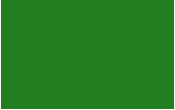


The magazine of the photo-essay

Jan 2017 back issue


by Joana Toro Mora
“A free, really high quality photo-essay magazine. Fabulous!”
Stephen Fry. British actor, writer and film & documentary maker

The Nasa or Páez people are an indigenous ethnic group, with an estimated population of 70,000 members, who
mainly live in the department of Cauca, in the mountainous southwest region of Colombia.
The Nasa people have a long warrior tradition of defending their culture and territory. The Spanish conquistadors tried
to dominate the Nasa through a system of forced labour which they imposed on many native peoples in Latin America
during the 16th, 17th and 18th centuries. The Nasa rebelled against the Spanish domination, putting up a fight of
resistance in the early 18th century, ultimately forcing the Spanish crown to formally recognise the territorial autonomy
of the Nasa people.
In modern times, this territory has been a focal point of conflict between the Marxist Revolutionary Armed Forces (FARC)
guerrilla forces and the Colombian armed forces. These violent armies fight Colombia’s internal war, which has gone on
for more than 50 years within the Nasa territory. As a response, the Nasa people have organised an Indigenous Guard –
a civilian self-defence organisation. At present, the Indigenous Guard has some 6000 active members, charged with
protecting communities by preventing the incursion of armed groups into the tribe’s territorial reserves.
This reportage documents the Indigenous Guard, which is formed of men, women and children armed only with
ceremonial sticks, as they confront these powerful armed men in the name of their cultural survival.
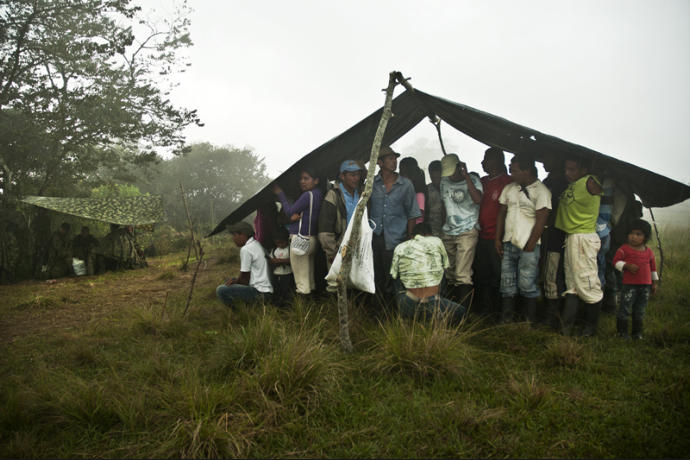
A group of Nasa people in a peaceful protest, waiting for Colombian army soldiers to leave their territories so as to
avoid violent confrontations with revolutionary Armed Forces (FARC).
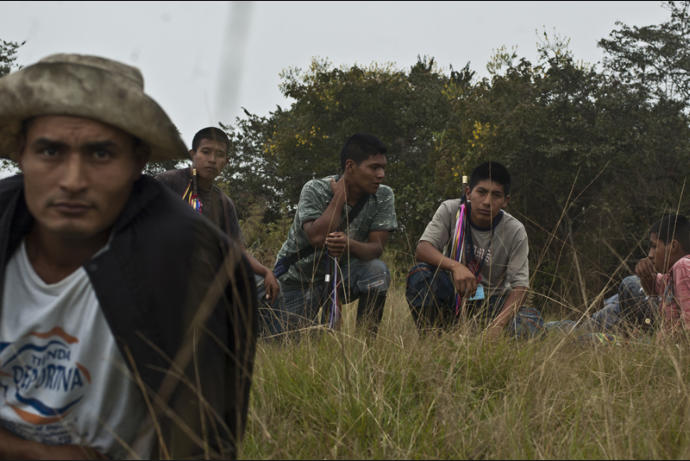
A peaceful protest by the Nasa people to prevent violent coflict between the FARC and government forces.
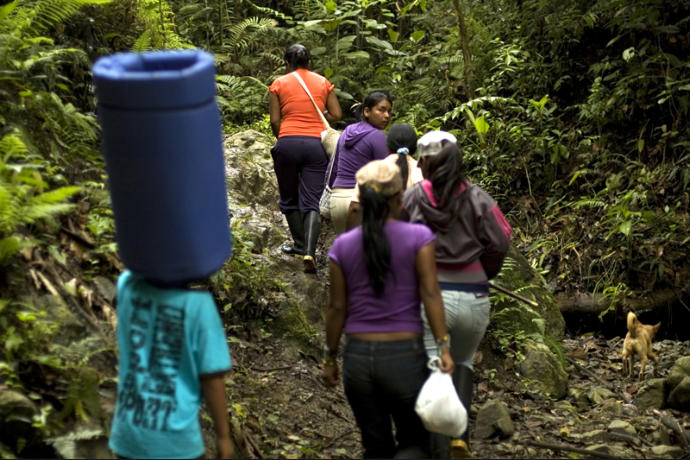
A group of Nasa people return to their homes after combats between Revolutionary Armed Forces (FARC) and the
government.

Revolutionary Armed Forces (FARC) graffiti on an abandoned car in indigenous reservations.
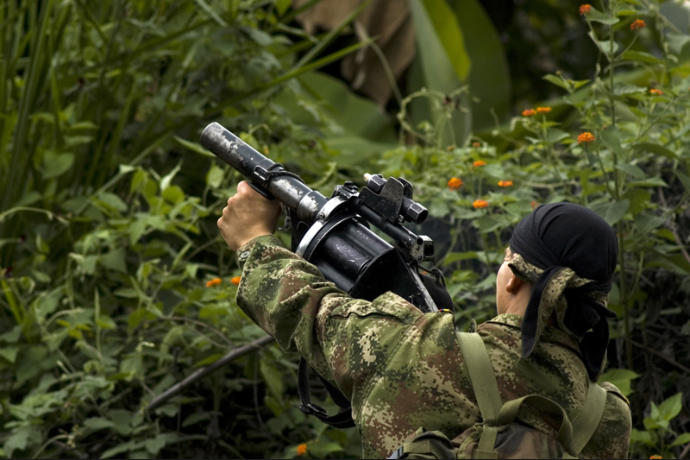
Revolutionary Armed Forces (FARC) member testing his weapon in indigenous reservations.
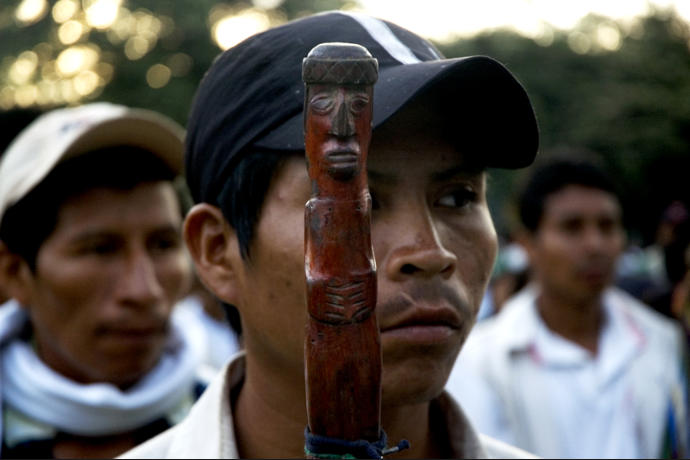
Indigenous Force member in morning practice using his Chonta. Indigenous Force members protect their reservations
using ancestral culture and peaceful practices.
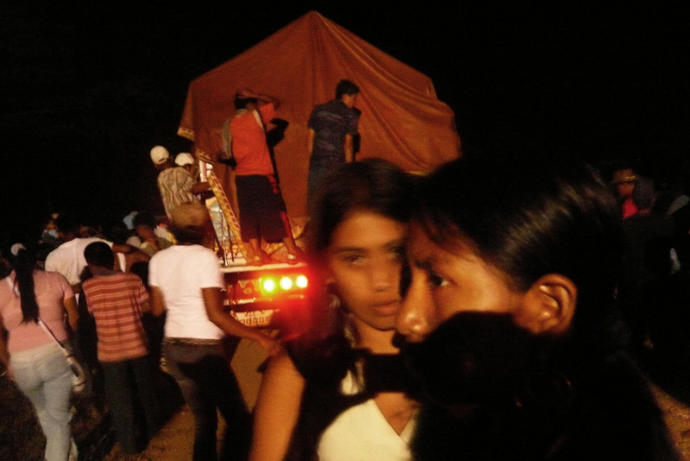
A group of Nasa people on a peaceful march in the capital demanding respect of their territories.
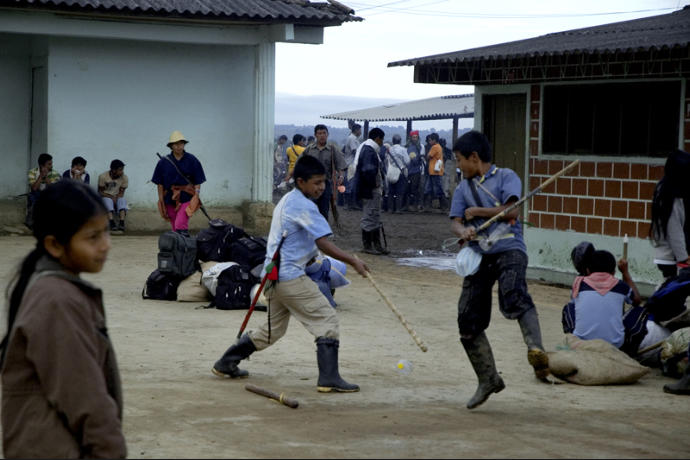
Peaceful protest in the capital.
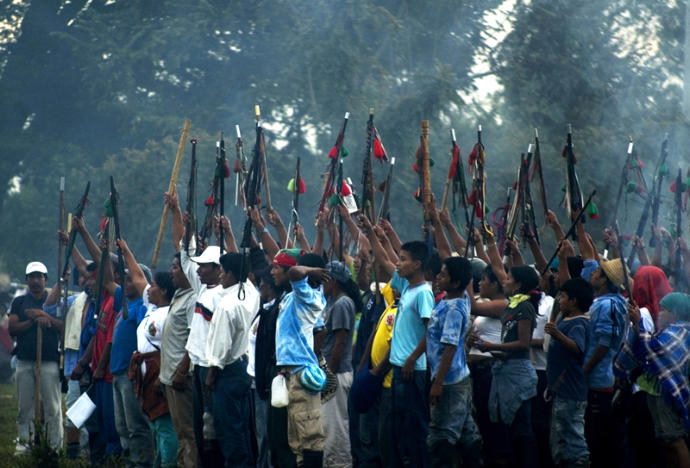
Peaceful protest in the capital.
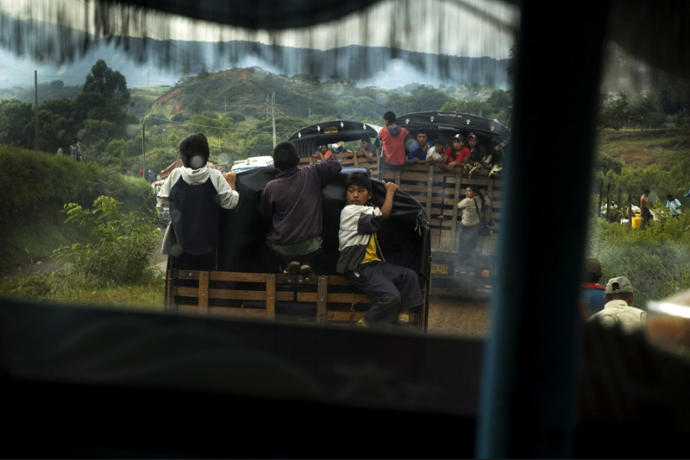
Peaceful protest leaving for the capital to demand respect of their territories.
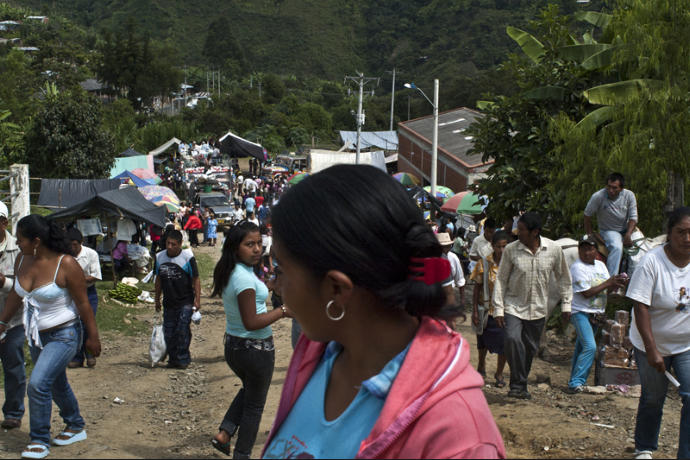
A young woman, walking around the market in Toribio Cauca, where all the indigenous farmers sell their products.
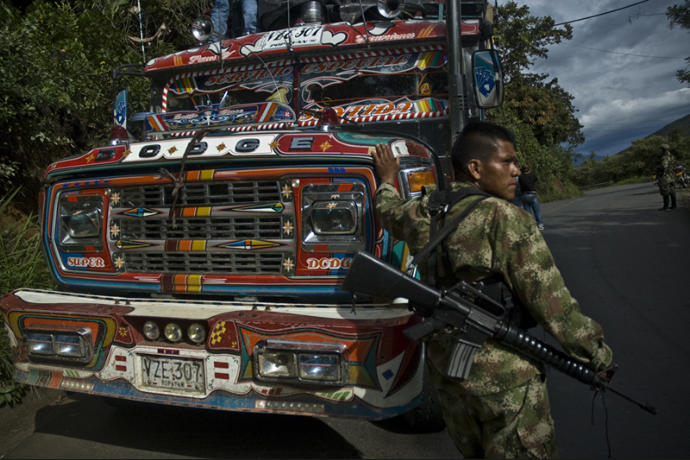
Revolutionary Armed Forces (FARC) member holding back the traffic in Toribio Cauca.
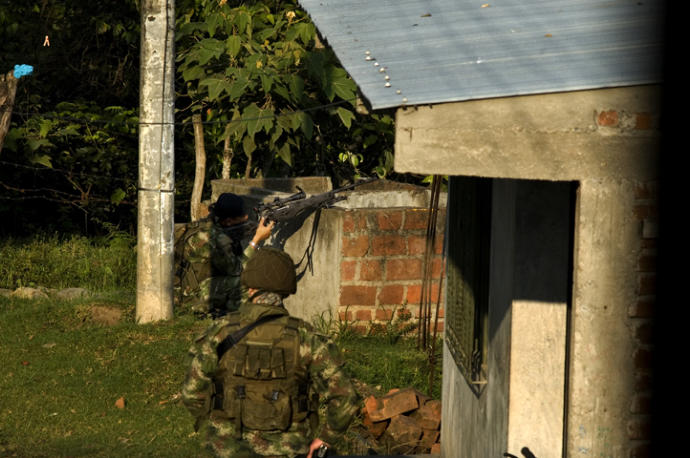
Colombian army soldiers using community houses in Toribio as cover to repel Revolutionary Armed Forces (FARC)
attacks.
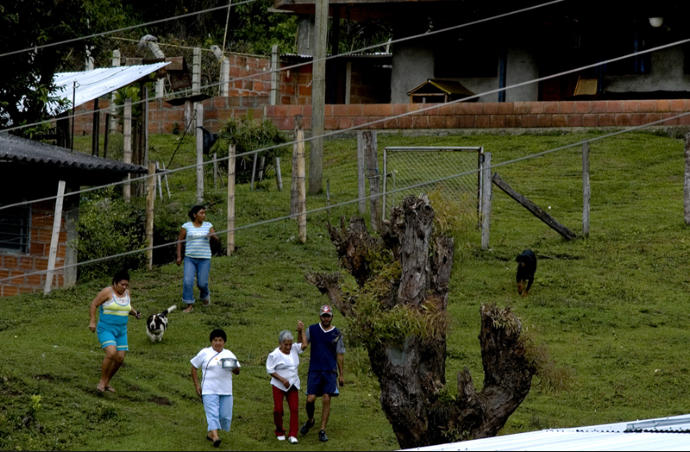
A group of Nasa people leaving their homes due to combat between Colombian army soldiers and Revolutionary
Armed Forces (FARC)
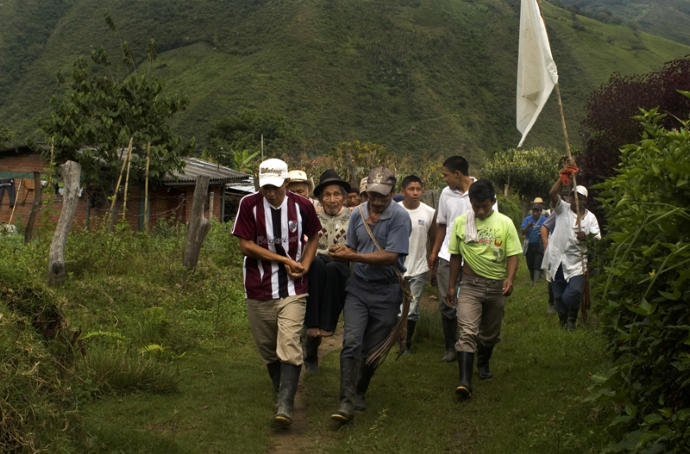
Jámbalo. 29 May 2010. An inhabitant of the lower areas of the mountain, wounded by a sliver of mortar that fell on
housing during conflict between government armies and FARC.
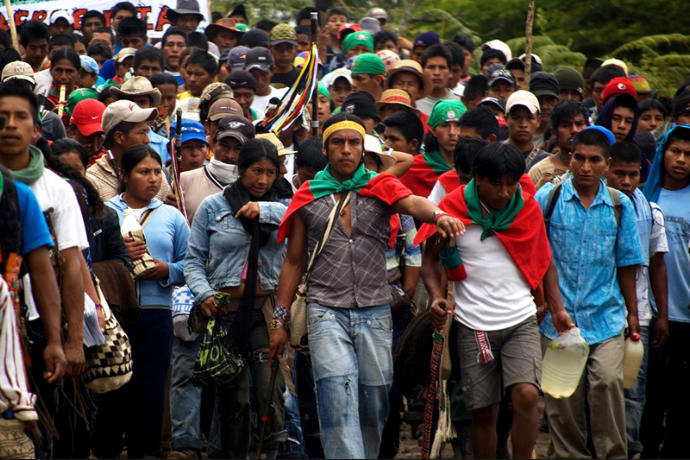
Jambalo, Cauca. An old indigenous farmer injured by a mortar shard in the hand whilst at home, is carried to a medical
centre. Colombian army soldiers and Revolutionary Armed Forces (FARC) are using indigenous territories as a
battlefield.
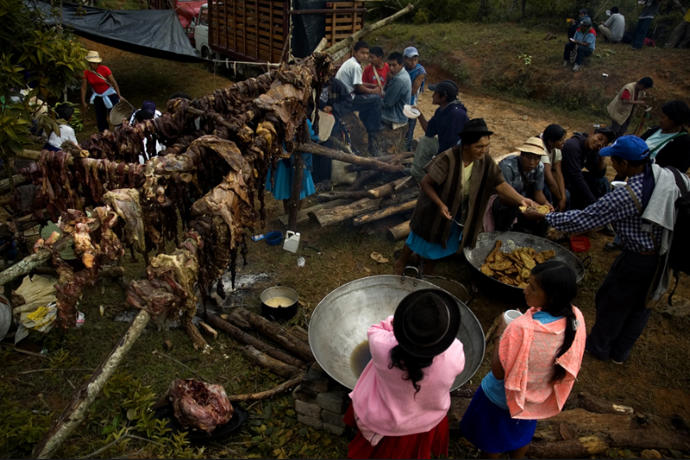
A group of Nasa people on a peaceful march in the capital demanding respect of their territories.
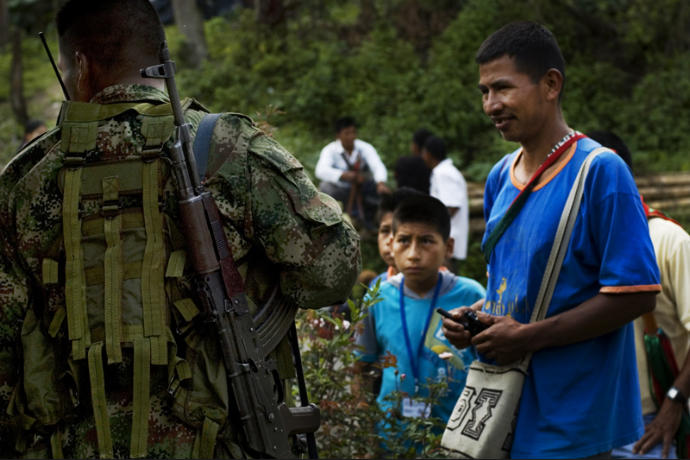
A Nasa leader trying to convince a Revolutionary Armed Forces (FARC) capitan to leave the school area due to the
risk to the kids.
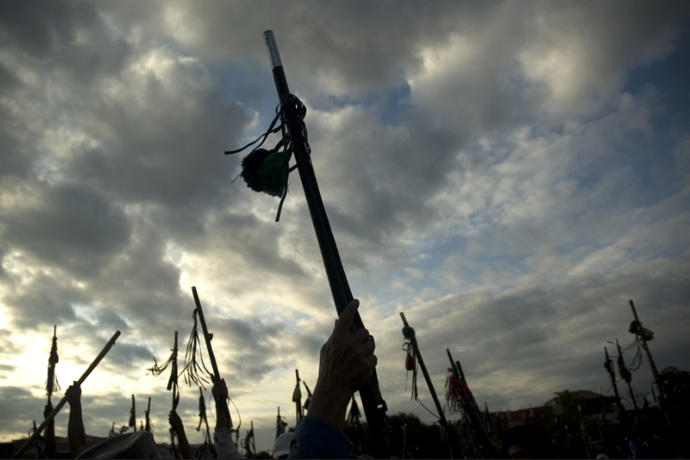
The Chonta is the symbol of power by the Guardia Indigena (Indigenous Force). This force of indigenous people
protects ancestral territories using ancestral culture and peaceful practices.






